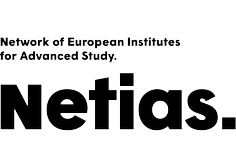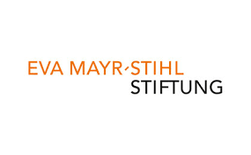Dr. Leon Karpa
Physics
Junior Fellow (Marie S. Curie FCFP)
September 2014 - October 2016
CV
I was born in June 1979 in Uman, Ukraine, where I attended a public school. After moving to Stuttgart, Germany, in 1992, I attended a Gymnasium and obtained a higher education entrance qualification (Abitur) in 1999.
After studying Physics at the University of Tübingen, I concluded my Diploma thesis in 2005 with a demonstration of a Stern-Gerlach effect for slow light. Continuing my research at the University of Bonn with a focus on quantum optics effects with dark state polaritons, hybrid quasiparticles constituted by collective atomic spin excitations and photonic components, I obtained my doctorate in 2010.
In late fall of 2010, I took up a postdoctoral research stay at the Massachusetts Institute of Technology, USA (since May 2011 as a Feodor Lynen Fellow of the Alexander von Humboldt Foundation). The research addressed two then arising promising topics in the fields of cavity quantum electrodynamics and quantum information processing: collective ion-photon interfaces and optical trapping of ions in hybrid traps.
In 2013 I took the opportunity to continue working on optical trapping of ions at the University of Freiburg, in a group that pioneered this novel scientific field. The focus of my current research is on the first realization of an experimental environment enabling studies of ion transport in optical lattices and ion-atom interactions at ultra-low temperatures where the behaviour of the combined system is governed by quantum mechanics.
Selected Publications
- L. Karpa, A. Bylinskii, D. Gangloff, M. Cetina and V. Vuletić, „Suppression of Ion Transport due to Long-Lived Subwavelength Localization by an Optical Lattice“, Phys. Rev. Lett. 111, 163002 (2013)
- M. Cetina, A. Bylinskii, L. Karpa, D. Gangloff, K. Beck, Yufei Ge, M. Scholz, A. Grier, I. Chuang and V. Vuletić, „Array of ion traps coupled to an optical cavity for a collective ion-photon interface“, New J. Phys. 15, 053001 (2013)
- L. Karpa, G. Nikoghosyan, F. Vewinger, M. Fleischhauer and M. Weitz, „Frequency Matching in Light-Storage Spectroscopy of Atomic Raman Transitions“, Phys. Rev. Lett. 103, 093601 (2009)
- L. Karpa, F. Vewinger and M. Weitz, „Resonance Beating of Light Stored Using Atomic Spinor Polaritons“, Phys. Rev. Lett. 101, 170406 (2008)
- L. Karpa and M. Weitz, „A Stern-Gerlach experiment for slow light“, Nature Phys. 2, 332 (2006)
FRIAS Research Project
Quantum transport of ions in optical lattices
The ground-breaking demonstration of laser cooling of atoms and ions to ultra-low temperatures and the observation of the Bose-Einstein Condensate (BEC) at the end of the last century have led to a tremendous breakthrough in the field of atomic physics with a vast number of applications across different disciplines. This development has enabled investigations of numerous important quantum phenomena with applications in very diverse areas ranging from precision metrology to quantum information processing (QIP) and analog quantum simulations. The latter have drawn increasing attention due to their potential to provide access to very diverse problems e.g. in solid state physics. Among several systems that represent a possible platform for such QIP devices, atomic ions confined in conventional radiofrequency-based Paul traps are an outstanding candidate in terms of quantum state control, manipulation, read-out efficiency and storage durability. Despite demonstrated advantages, in view of scalability required to simulate complex many-body systems common in solid-state physics, chemistry and biology, conventional traps suffer from a drawback based in their lack in flexibility to control potential shapes on short length scales. One possible solution to this problem is the trapping of ions in periodic optical potentials, allowing for ion distances on the order of the optical wavelength, typically a few hundred nanometers, which is sufficiently short to observe the desired phenomena. The practical implementation of such an experiment that provides an engineered periodic short length-scale environment for studies and simulations of controlled quantum transport is the principal goal of this research project.





